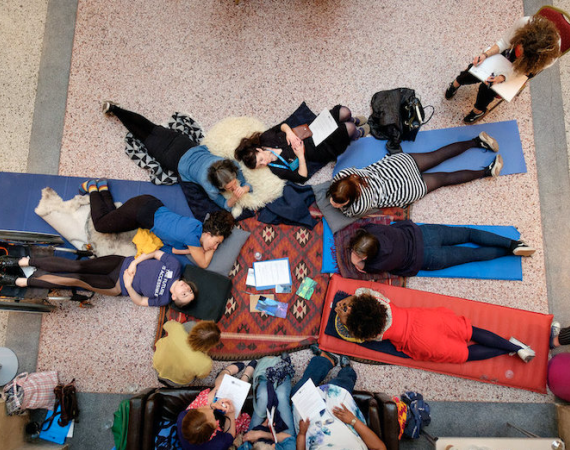Studio blog
Posted on Tue 23 Feb 2021
Future Themes Blog - Crip Tech & Belonging
In the third of our Future Theme Blogs we hear from Resident Raquel Meseguer Zafe of Unchartered Collective. Last year the Studio funded seven teams of Residents to explore ideas at the intersection of technology and culture.

c/o Unchartered Collective
“...I feel like in disabled spaces, digital or physical, there is an acceptance that humans are messy. Disabled spaces welcome the messiness and see value in the ‘disruptions’.”
– Artist interviewed
In September 2020 I received a Pervasive Media Studio Future Themes Award to undertake a period of research. In this research I wanted to host conversations with other disabled artists, to find out about their artistic practice and their experiences of disability, in the hope of understanding more nuanced ways to make art more accessible. I was interested in how we go beyond standard access, to enable belonging in our public spaces.
I was lucky enough to interview 6 amazing disabled artists on the following questions:
1. What tech could we, as disabled artists, not live without?
2. How have we cripped tech (analog, digital, space, etc) in life and in art?
3. What technologies or strategies are we using to create meaningful connection in our work?
I’ve collated the many brilliant answers into the following short pieces that can be read as stand alone (but work better in the context of the booklet):
- Our disabled experiences of tech,
- Using tech to translate lived experience of disability
- Disability as a creative generator,
- Interrogating theatrical form to tell our stories,
- Fences,
- Belonging & thriving,
- An application fo the learning in a case study: integrated workshops
- And extended appendix on creative Audio Description.
I suggest you make a brew, curl up somewhere cosy and dive into our words and our worlds. And maybe on the other side drop us a line, and tell us what most excited you about the ideas collated here.
Read the Crip Tech & Belonging booklet here
You can listen to an audio version here.
A huge thank you to the participating artists Jo Bannon, Barrington Chambers, Jonny Cotsen, Stephanie Kempson, Holly Thomas and Grace Quantock.